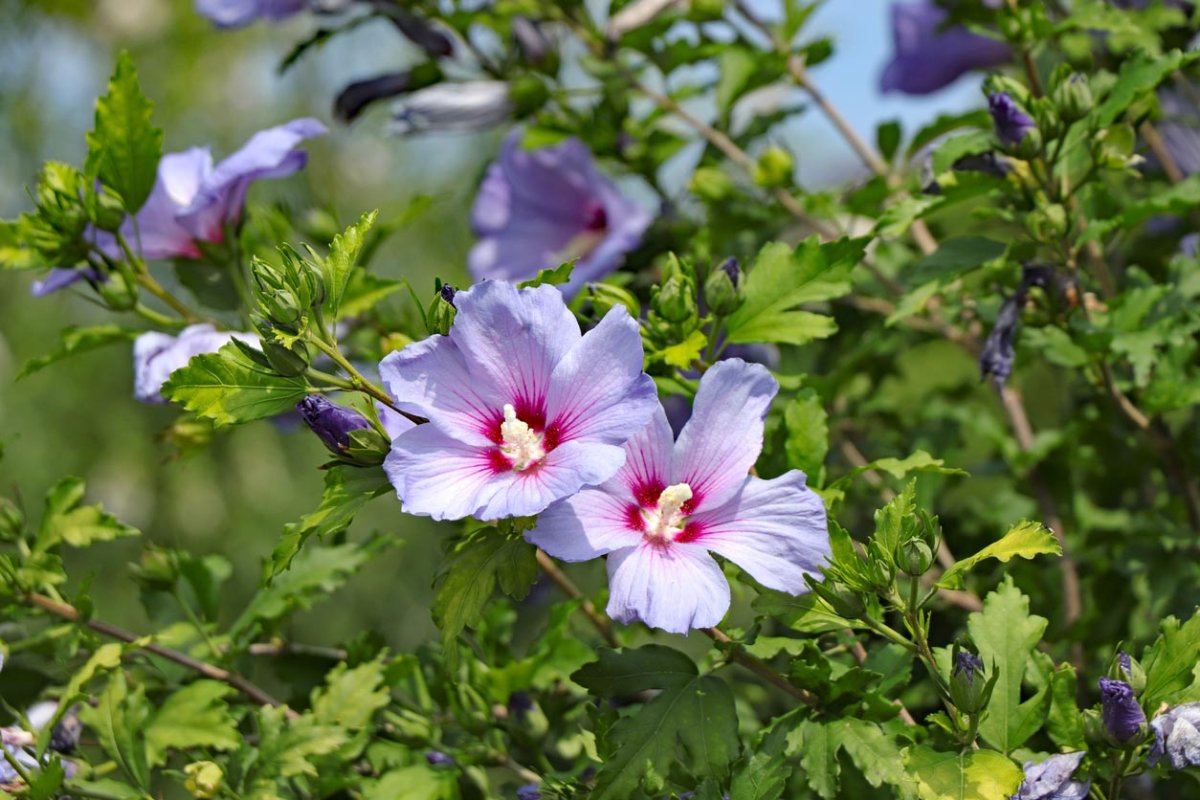

We may earn revenue from the products available on this page and participate in affiliate programs. Learn More ›
Welcome to Ask a Pro! Every month, we’ll take your questions about home improvement, DIY, lawn and garden, and homeownership and answer them with the help of professionals. Our experts are vetted and verified—and they’re eager to share their knowledge.
Last month, BobVila.com readers submitted lawn and garden questions on Facebook and Instagram, and via our newsletter. We hand-picked our favorites, and tapped Rosemarie Miner, the Founding Principal of Our Temenos to help answer them. In this very first installment of our Ask a Pro series, Rosemarie tackles your questions about getting rid of invasive plant species: Rose of Sharon, bamboo, English ivy, and Poison ivy and Poison oak.
Meet the Expert: Rosemarie Miner, Founding Principal of Our Temenos
Rosemarie Miner founded and leads New York City’s only woman-owned ecological landscaping company, which serves residential, commercial and government clients. She works tirelessly to transform outdoor spaces into productive, functional green infrastructure that can stand up to climate change. Working in the field since 2012, Rosemarie has a history as a community organizer. She has served with AmeriCorps and MillionTreesNYC, and also as Brooklyn’s Organizing Fellow for 596 Acres. She holds a Bachelor of Science in ecology.
To see more of Rosemarie’s work, check out her website, LinkedIn, and Instagram pages.
- Want more lawn and garden advice? Sign up for our newsletters!
Rose of Sharons had to be cut down, they’re so invasive. I plucked 700 little sprouts of them in my lawn, but I can’t keep up. Any suggestions? — Donna Marie K. on Facebook
Rosemarie’s Advice: I wish we had a quick solution for this, but you likely have an extensive supply of Rose of Sharon in your property’s seedbank. The soil stores seeds for decades, which lie in wait for the right opportunity. For Rose of Sharon, every day is an opportunity.
You can continue plucking them up when you see them, but feel free to mow right over the seedlings as well. Do yourself a favor and never let these flower or go to seed! You will see a decline in the long term as you wear the seedbank out through weeding and cutting. Whichever one of you has the most patience will win the battle in the long term.
How do I get rid of bamboo in my backyard? — @zoig20 on Instagram
Rosemarie’s Advice: We’ve seen bamboo grow under a concrete slab that was 25 feet long and pop up in the neighbor’s back garden! If you’re already in the bamboo boat, the way we remove this ecological nuisance is to dig it out. It is an arduous process, but it’s the only thing that makes a long-term difference without poisoning you and the soil.
Cut the bamboo down to a couple of inches and expose the roots in as many areas as possible. Let the sun and heat dry out the roots over the course of a few days. The best tools to excavate the root system will be a pickax, hori hori knife and a lot of patience. Make sure to stay hydrated and document the process! You’ll be very impressed with yourself at the end of it.
- Check out the best hori hori knives and the best pickaxes.

My backyard is almost entirely covered with English ivy. For years, we were encouraging it and now it’s gotten out of hand. What do you recommend as an aggressive native groundcover? — Francine E. on Facebook
Rosemarie’s Advice: Unfortunately, ivy is one of the most aggressive invasive plants we have to contend with, and it’s still sold in nurseries across the country! Start by digging out as much as you can, taking care to remove the ivy roots and bag up all plant material. If your exposure is full or part sun, you can plant our native strawberry in its place, Fragaria virginiana. It will completely cover the soil and provide forage for humans and wildlife alike! If your exposure is part shade to full shade, you’ll be harder pressed to find native groundcovers with an equally aggressive personality. Plant Pachysandra procumbens (our East Coast native of the beloved pachysandra) and pull out any ivy that pops up as the pachysandra takes hold. An evergreen ground cover such as Arctostaphylos uva-ursi, or bearberry, will take hold in various light conditions and is especially fond of poor soil. Whatever you choose, take care not to replace it with another nuisance like vinca or liriope.
Poison ivy and poison oak: Do you have suggestions to curtail them? — Pam Henry H. on Facebook
Rosemarie’s Advice: With poison ivy and poison oak, we recommend that during winter homeowners begin manual removal; that is, by hand. Please do not attempt this without PPE (personal protection equipment) and adequate protection and never, ever burn poison ivy or poison oak cuttings.
Once you have removed the plant material and disposed of it safely, you will need to plant natives in place of these two plants to outcompete them. I recommend our native Virginia creeper, which will provide winter forage for birds, fulfilling the beneficial role that poison ivy plays without the nuisance. Also, depending on the size of your property there may be places where you can leave poison ivy to grow. It is a native plant and plays a vital role in the local ecosystem, specifically feeding overwintering birds. To replace poison oak, consider a native understory plant. These are plants that are happiest growing under the canopy of more mature and established trees.
Some queries have been edited for clarity. We’re tackling pest and wildlife control problems in June. Have a question? Let us know by filling out this form!
